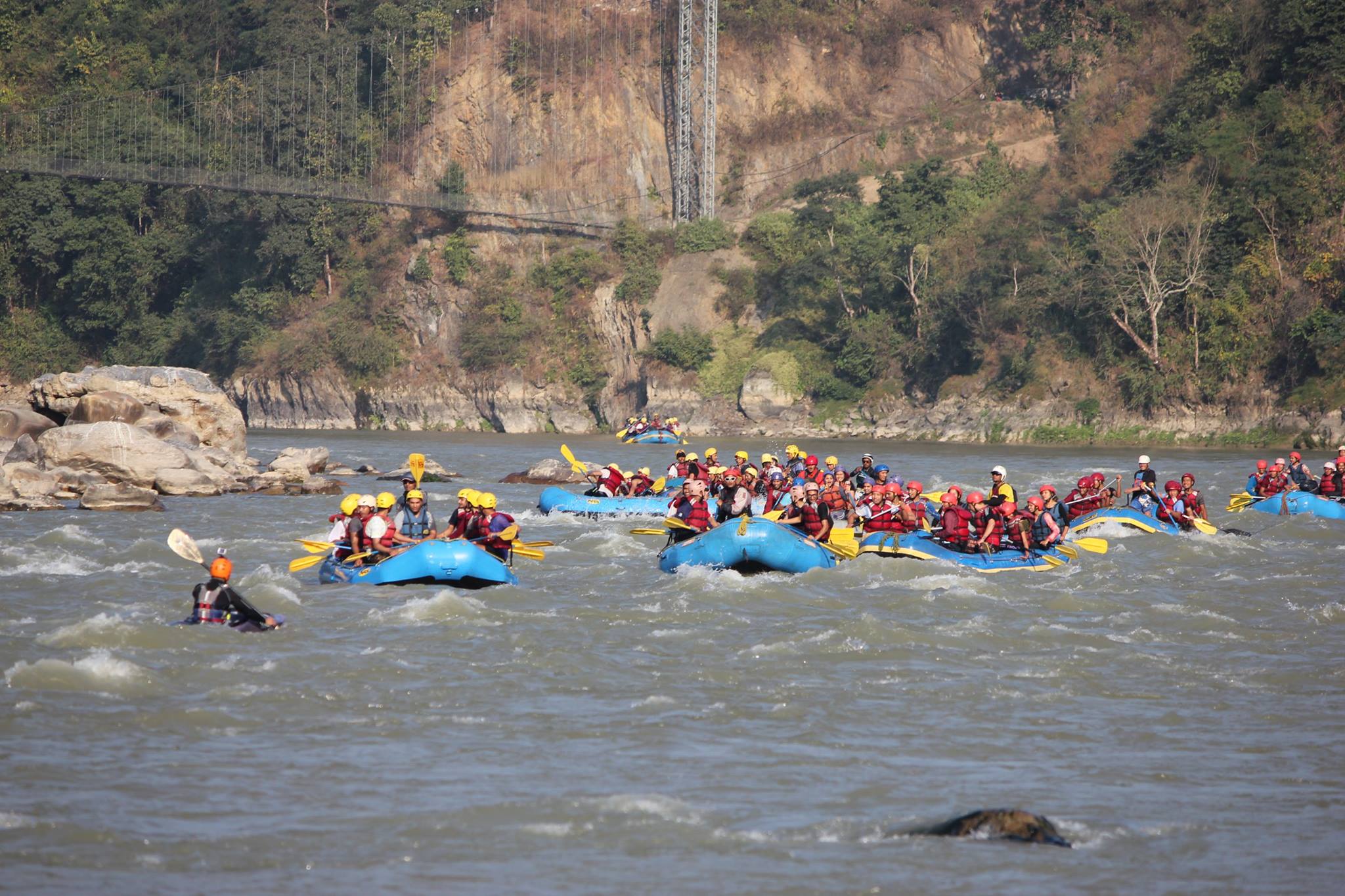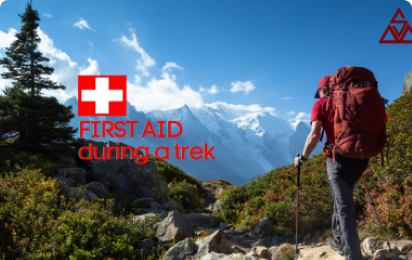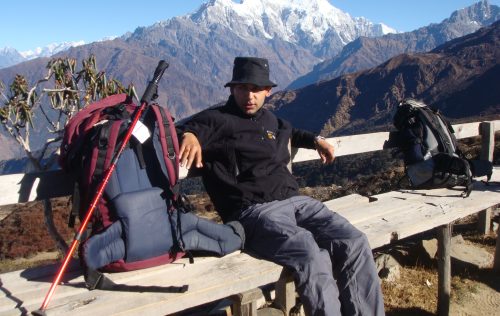1.1 Introduction
Rafting or White water rafting is the challenging recreational outdoor activity of using an inflatable raft to navigate a river or other bodies of water. This is usually done on white water or different degrees of rough water, in order to thrill and excite the raft passengers .The development of this activity as a leisure sport has become popular since the mid-1970’s.It is considered an extreme sport, as it can be adventures.
Rafting is one of the most popular adventure sports in Nepal. Nepal has been blessed numerous fast flowing rivers that flow down from the Himalayan cutting through mountains and carving deep gorge too finally reach the vast plains where, showing down the wander lazily towards India. Many of these rivers ideals for white water rafting, kayaking and some considered the best in the world by professional rafters in the KARNALI from the west Nepal .Rafting also is a fascinating means of getting to know the country as the rivers flow through some of the most enthralling landscape that include snow-covered mountains, terraced hillside, sparking waterfalls, lush green valleys and typical, charming little Nepali village.
1.2. Kayaking in Nepal
Nepal has really taken off as one of the world’s premier play boating destinations, with many of the top of the world kayakers coming Nepal to play, expedition trip, simply commercially paddling trip and International class white water events in Nepal. I.e. Nepal is a paradise for the average white water recreation boater. As one kiwi group said: Any ordinary dude can do it, Nepal is an exotic friendly country with many rivers, easy as well as more difficult. It has something for everyone, and is suited to all pockets, but it can be particular recommended for its magnificent multi-day trips.
1.3. Nepal’s Popular Rafting Rivers
Sun Koshi, Bhotekoshi, Tamur, Arun, Dudh Koshi, Tama Koshi, Balephi Khola of the Koshi river system in eastern Nepal. Kaligandaki, Budhigandaki, Marshyangdi, Trisuli, Seti Khola of the Gandaki river system in central Nepal and the Karnali, Seti Karnali and Bheri river of the Karnali river system in far western Nepal.
1.4. Best Rafting Season in Nepal:
The three main seasons suitable for rafting activities in the rivers of Nepal are winter-spring (January through May), monsoon (June through August), and autumn-winter (September through December).
1.5. Grading System: from I to VI
Grading of the rivers vary with the season, since their discharge varies. They are turbulent and wild and adventure during the monsoon season, similarly due to the low water level in spring become fast current and become mild in winter. So the grading information based on Autumn October to November.
Class I-Easy: Moving water with occasional small rapids. Few or no obstacles.
Class II-Moderate: Small rapids with regular waves. Some maneuvering required but easy to navigate.
Class III-Difficult: Rapids with irregular waves and hazards that need avoiding. More difficult maneuvering required but routes are normally obvious. Scouting from shore is occasionally required.
Class Iv-Very Difficult: Large rapids that require careful maneuvering. Dangerous hazards. Scouting from shore is often necessary and rescue is difficult. Kayakers should be able to roll. Turbulent water and large irregular waves may flip rafts. In the event of a mishap, there is significant risk of loss damage and/ or injury.
Class V- Extremely Difficult: Difficulties of class 5 carried out to the extreme of navigability. Might possibly (but not probably) be run by a team of experts at the right water level, in the right conditions with all possible safety precautions, but with considerable hazard to life.
Class VI- Extremely Dangerous: Classified as unraftable. All previous difficulties increased to the limit of practicability. Very confused, Very Violent, Exploding and folding water so difficult that controlled navigation by raft is virtually impossible. Swimming this grade of rapid is considered suicidal. Requires extreme luck or skill to finish.
1.6. Types of Rafting Trips
There are different types of river rafting trips. Nepal will be the first white-water experience for many paddlers. It is very important to select the type of trips that suits your interest and ability. Before planning on any your trips, make sure that you go and visit your rafting operator and get all the necessary information on it.
A. Paddle Raft:
Paddle raft means you row with a paddle raft the guide normally sits at the back calling instructions and steering (Row left, Row right, forward, forward, backward, over left, over right, hold on or get down), while the crew provides the power. A good team work is very important and excitement while rafting.
B. Oar Raft:
It is a luxurious trip. Any raft with an oar frame the guide normally alone sits in the middle and rows, while the other passengers enjoy the scenery. Rafting trips are generally quite luxurious trips where you rowed down the river and staff does everything for you (Setup camp, cook and so on).The quality of rafting equipment is another variables, and can make a huge difference to the safety of paddlers.
1.7. Organizing Rafting and Kayaking:
If you are going for an organized rafting trip, all the necessary logistics and equipment will be arranged by your rafting company. You only need light cotton clothing. You only need light cotton clothing. You may also need to bring sun hat, swim-suit and sun cream and light shoes or sandals. For overnight trips a sleeping bag is necessary and can easily be hired in Kathmandu and Pokhara (Whole briefing will be done by the Rafting Agency).
1. A Raft Guide:
A raft guide is a trained, professional and capable one who holds certified identity provided by the GoN. Such a professional guide leads commercial white water rafting trips. Most raft guides are employed by registered rafting companies who usually performs either single day trip to multi-day trips.
2. Equipment:
Quality equipment obviously makes a huge difference to the safety and comfort of a trip. Rafting are inflatable boats made of thick rubber, usually with separate air compartments so that a hole in any part of the tube does not mean that the whole rafting will deflate and collapse. Life jackets and helmets are provided as compulsory gear. Paddles may be made of synthetic alloys and fibers which are longer and more maneuverable, or they may be of plain wood coated with synthetic waterproof paint.
All the gear and food will be packed inside waterproof bags and carried on the raft itself. Your cameras and accessories, stored inside the waterproof barrel, will be available for your use during the day. The setting up of camp and cooking will begin as soon as campsite is reached.
3. Rafts:
Rafts come in various sizes. The most popular is 16ft (5 meter) long, and this will take crew of six plus guide and gear, or up to 8plus guide without gear. The best example of this size is the famous company Avon professional, NRS Hi side. Rafts like this are very tough and rugged so it’s rare for them to be damaged or punctured. Even if the latter happens, this is usually not serious as they have eleven separate compartments to keep them afloat. For really hard rivers, where swamping or a flip is likely, then a self-bailing model with an inflatable floor is recommended and should be considered obligatory for high water trips. More and companies now use self-bailing rafts as standard.
4. Life Jackets /PFD (Personal Floatation Devices):
Life Jackets /PFD (Personal Floatation Devices) are essential. Modern ones are comfortable and well-fitting and have adjustable straps and buckles to ensure a snug and secure fit. The best ones have a minimum of 7kg (15lbs) of buoyancy for a large adult. One important thing to ask is the age of the jacket- the foam in the jackets perishes with time and also absorbs more water so that after 6 years it may only have the buoyancy.
5. Helmets:
Helmets should be considered as obligatory on any white water trip. The main danger on an oar rig is banging your head on the frame or oars if you get thrown across the raft: this is only likely to happening in a big rapid. On a paddle raft, the helmet is more to protect your head from the paddle strokes of your over enthusiastic team mates! Try to select and adjust your helmet so that it fits well and provides good protection for your forehead.
6. Paddle:
Paddle is to a rafter, like boots are to a trekker. The best modern paddles these days are plastic and alloy-light, strong, and comfortable to use. Beware of any locally made wooden ones which are often clumsy, heavy and give you blisters all right for a short one day trip, but sheer hell for a longer river!
For white water trips, the raft should with ‘flip lines’ so that it can be righted in the event of a Capsize. It should also carry throw bags for rescuing swimmers (ask your guide for a demonstration). All trips should carry comprehensive first aid and repair kits and spare oars or paddles
What kind of waterproof containers does the company provide? How old are these? Modern roll top bags are excellent do they provide a waterproof barrel for cameras and video gear?
7. Camping gear:
Camping gear varies widely. If you are rating in the spring , then good rain proof tents or flysheets are essential, but from October to December rain is unlikely and many people like to sleep out under the stars. A tent is nice as a cozy, private and relatively sand-free bedroom –best ones are free standing dome tents with a built in ground sheet. This type of tents is expensive and so most companies provide a more basic model. Riverside beaches are pleasant, friendly environments-there are no bugs (well almost nine) and need have little fear of snakes, scorpions.
8. Personal Equipment:
One of the nice things about a river trip is how few things you need: we can remember several instances where guides, in all the hurly-burly of organizing the group gear, have ended up leaving their own personal gear behind-and no problem, all you really need is a pair of shorts and a thermal top!
Check with your raft company, they will probably provide you with a gear list and advise what items they provide. Many companies supply light waterproof nylon ‘paddle jackets’ and if the river or weather is likely to be cold then they may also provide wetsuits and thick thermal tops. Here’s a suggested list for a two day trip based on that supplied by ultimate descents international.
What to bring?
-Sleeping bag, inner lining for sleeping bag.
-Lightweight trousers/pants.
-Sunscreen and lip balm (high factor),
-Small towel.
-Lightweight shirt.
-Very small amount of money.
-Thermo rest or sleeping material rain jacket.
-A Gore-Tex or similar material rain jacket.
-Small towel, Toiletries, moisturizing lotion.
-Spare glasses or contact lenses if you wear them
-Small head lamp or flashlight with spare batteries.
-Water bottles.
River wear
-Swim suit, two pair of good quality river shorts such as guide shorts. Swimming costume is optional.
-Baseball style peaked cap.
-High quality River sandals.
-Light thermal top or T-shirt.
-Sunglasses and strap.
-Personal water bottle.
Optional Items:
-Reading and writing materials.
-Personal medications.
-Camera and film.
-Pocket knife.
-Light nylon waterproof jacket is preferable.
-Contraceptives.
-Binoculars can be.
-Fishing gear if you are interested.
-Personal first aid kit









